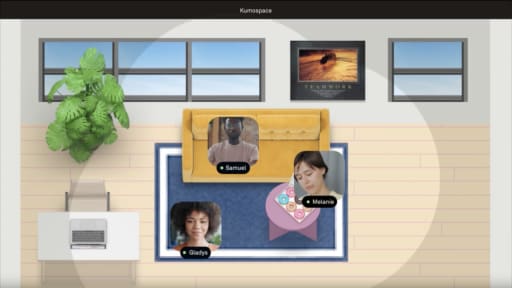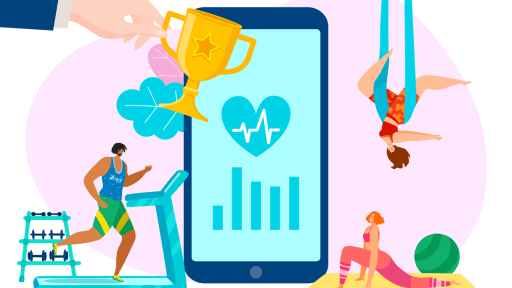Need to grab your audience’s attention fast? Whether you are writing a speech, presentation, or piece of marketing content, the first few seconds can determine whether people keep listening or tune out completely. This article explores the top 15 attention getters that instantly captivate any audience, from bold opening statements and thought-provoking questions to engaging stories and surprising statistics. Each technique is backed by communication strategies proven to spark curiosity, establish credibility, and make your message stand out from the start.
Key Takeaways
- Capturing your audience’s attention within the first two minutes is essential for effective speaking.
- Tailoring your attention getter to match the audience’s interests and the tone of your speech increases event engagement.
- Using techniques such as bold statements, thought-provoking questions, and captivating stories can significantly strengthen your connection with the audience.
Why Attention Getters Are Crucial for Effective Speaking

Capturing the audience’s attention at the beginning of a speech is not just a nice-to-have; it’s a necessity. The first few moments of your presentation are crucial for setting the tone and establishing a connection with your audience. An engaging introduction can prevent listeners from letting their minds wander or, worse, tuning out entirely. Studies have shown that audience attention spans have significantly decreased over the last two decades, making effective attention getters more essential than ever.
A strong attention getter does more than simply grab the audience’s attention; it sets the stage for the entire speech. Evoking feelings of excitement and curiosity helps create a mutual understanding and emotional connection with your audience.
Whether it’s a startling statement, a thought-provoking question, or a captivating story, the right hook at the start of your talk can make your audience believe that your speech will be both informative and valuable. Remember, the first two minutes are critical for establishing this connection, so make them count!
Key Elements of a Good Attention Getter
A good attention getter should resonate with the audience’s interests and characteristics. This means understanding who your audience is, what they care about, and what will pique their interest. Tailoring your attention getter to match the speech’s mood and tone is also essential for creating a cohesive and engaging introduction. A humorous opening suits a casual, lighthearted speech, while a bold statement or compelling fact fits a serious, informative presentation. Good attention getters can significantly increase your speech’s effectiveness.
In addition to being relevant and well-matched to the speech, a good attention getter should be delivered smoothly and confidently. This requires practice and refinement to ensure that your delivery feels natural and engaging.
Engaging the audience can also be achieved by identifying and utilizing common ground between the speaker and the audience. When the audience feels connected to the speaker, they are more likely to be interested and invested in what the speaker has to say.
Proven Techniques to Grab Audience's Attention

There are various effective attention grabbers for speeches that can captivate an audience quickly. These techniques include starting with a bold statement, asking thought-provoking questions, and sharing a captivating story. Each of these methods has a unique way of engaging the audience and drawing them into the speech.
Using fascinating facts or astonishing statistics can pique the audience’s interest right from the beginning. Similarly, an interesting contrarian approach, where you challenge a widely accepted idea, can serve as a powerful attention getter. Rhetorical questions are also effective, as they draw the audience into the topic without expecting a verbal response. Quotes, when used effectively, can engage audiences by adding authenticity and relatability to the message. Let’s explore these techniques in more detail.
Start with a Bold Statement
Bold statements can captivate the audience’s attention by presenting surprising or counterintuitive information. For instance, starting your speech with a startling statistic or an unexpected assertion can immediately grab the audience’s interest and make them eager to hear more. Figures and unusual facts are common forms of bold statements that engage listeners and prompt them to seek further details about the topic.
However, it’s important to present these statistics or large claims in clear, digestible terms to maintain the audience’s interest. Bold statements are effective attention getters because they spark curiosity and encourage the audience to focus on the speaker’s evidence. Remember, the first sentence of your speech sets the tone for the entire presentation, so make it count.
Ask Thought-Provoking Questions
Asking thought-provoking questions is another powerful way to engage the audience and prompt them to think. Rhetorical questions, in particular, can foster a sense of involvement and encourage the audience to reflect deeply on the topic. When posed at the beginning of a speech, these questions can increase engagement by prompting critical thinking and curiosity.
Using a series of questions rather than just one or two is often more effective. This technique keeps the audience mentally active and encourages them to form internal responses as the speech continues. Before using a question in your speech, it’s important to pause and let the audience think. This brief pause allows listeners to process the question and mentally respond, increasing their engagement with the topic.
Share a Captivating Story
Both real and imaginative stories can serve as powerful tools to engage listeners and make messages resonate. Utilizing a storytelling approach in presentations enhances audience engagement by creating emotional connections. When the audience can relate to the story, they are more likely to remain interested and invested in the outcome.
Personal narratives, in particular, strengthen engagement by fostering relatability. Sharing a meaningful personal story can keep the audience interested and emotionally connected to the message. Stories have the power to transport listeners, allowing them to imagine and feel the experiences being described, which makes this technique especially compelling.
Engaging with Humor

Including humor in your speech can be an effective way to increase audience engagement, provided it aligns with the overall tone of the presentation. Laughter can trigger the release of oxytocin, fostering emotional connections between the speaker and the audience. Recognizing and sharing humorous observations from everyday life can also increase a speaker’s relatability.
Guidelines for using humor effectively:
- Use humor carefully to avoid turning the audience against the speaker.
- Avoid humor that the audience might find unfunny or offensive.
- When used appropriately, jokes can diffuse tension and create a more relaxed atmosphere.
Successful speakers often use a combination of humor and personal anecdotes to engage their audience, and they do this right from the start.
The Power of Quotations
Quotations can enhance speeches by establishing authority and illustrating key points. Quoting well-known figures can immediately gain audience trust and interest if the quote is relevant to the speech’s subject matter. Effective use of quotes in speeches should be brief to maintain audience engagement.
A speaker should:
- Provide context for quotes when necessary, especially for less familiar figures.
- Ensure quotes are relevant and connect to the topic being discussed.
- Use quotes to add authenticity and relatability to the message.
By using quotations effectively, speakers can add depth and resonance to their speeches.
Visual and Sensory Engagement

Vivid language increases audience engagement by creating strong mental images that aid in retention and relatability. Using sensory words can significantly increase the emotional impact of a speech, allowing listeners to feel as if they are experiencing the narrative. The effectiveness of vivid descriptions often relies on the audience’s ability to relate to the experiences being shared.
Incorporating visualizations can help the audience grasp complex topics by using relatable scenarios. Research indicates that when vividness is aligned with the central message of a speech, it can enhance persuasion. By engaging the audience’s imagination, speakers can create a more memorable and impactful presentation.
Involving the Audience Directly
Engaging the audience through questions can stimulate curiosity and encourage interaction. Asking thought-provoking questions fosters reflection and strengthens the audience’s connection to the topic. Digital tools can facilitate real-time engagement, such as live polling or Q&A sessions, making attention-getters more interactive.
Consider implementing questions and digital engagement tools in your next presentation to enhance interaction and connection with the audience. By involving the audience directly, speakers can create a more dynamic and engaging presentation.
Historical References and Analogies
Using historical events and analogies in speeches can increase their effectiveness in several ways:
- Adding relevance and a sense of significance through historical context.
- Connecting new concepts with familiar ideas using analogies.
- Bridging the gap between familiar concepts and new ideas to enhance audience comprehension.
Juxtaposing a speech with significant historical references provides strong context and enhances engagement. Combining analogies and historical references allows speakers to make complex topics more engaging and easily understandable.
Practicing and Perfecting Your Attention Getters

Editing and practicing speeches until they fit the audience is crucial for refining attention getters. Insufficient rehearsal can lead to a disorganized delivery and missed key points during the speech. Attention getters should be kept short and concise to maintain audience engagement.
A speaker should:
- Convey excitement and trust during delivery to effectively engage the audience.
- Avoid speaking too quickly, as it can confuse the audience and convey a lack of preparedness.
- Adapt the speech based on audience reactions to maintain engagement.
Common Mistakes to Avoid
When using a startling statement, it is crucial to balance the statement with the core message to maintain clarity and engagement. Jokes should be carefully considered to ensure they are not insulting and are appropriate for the audience, maintaining a positive atmosphere. Overly vivid descriptions can backfire if they overwhelm the audience or distract from the main message, requiring a clear and concise approach.
Historical analogies can oversimplify complex issues if not accurately contextualized, which can mislead the audience. Overemphasizing personal experiences may lead to a disconnection with the audience’s needs and interests, diluting the impact of the message.
Tailoring Attention Getters to Different Audiences
Selecting an attention getter that resonates with the audience’s background can enhance engagement. Understanding the audience’s background and preferences allows for more tailored and impactful presentations. The purpose of the speech should align with the attention getter to create a cohesive introduction.
An attention getter’s tone must match that of the speech to avoid confusing the audience. Different speaking occasions require specific types of attention getters to be effective. Effective humor should not only entertain but also align with the audience’s expectations and context.
Non-Verbal Attention Getters for Classroom Management
The clap-in technique enables teachers to capture attention by:
- Creating a rhythm that students can join in on, promoting engagement without raising their voices.
- Practicing clap-in or snap-in rhythms to enhance students’ reflexes and focus.
- Using a countdown from a specific number to help students return their attention to the teacher.
Methods to Manage Student Attention
Teachers can use various strategies to maintain student focus:
- Incorporate timers or music into activities to signal students when to stop talking and pay attention.
- Use sound effects as a fun method to alert students to refocus while ensuring they know how to respond appropriately.
- Employ non-verbal cues to maintain classroom silence and manage attention effectively.
Verbal Attention Getters for Teachers
Verbal attention getters can significantly increase student engagement. Using musical instruments or vocal techniques can be effective methods to capture attention. Students respond to cues such as the “Give Me Five” technique, which signals them to demonstrate behaviors like eyes on the speaker and ears listening.
Before starting a lesson, it is beneficial to teach and rehearse a call back with students to enhance engagement. Timing student responses to attention getters can make the “Give Me Five” technique more effective. Practicing attention getters is essential for setting clear expectations and familiarizing students with classroom routines.
Using Technology to Enhance Attention Getters
Incorporating technology into presentations can significantly improve the ability to grab and maintain audience attention. Presentation software like PowerPoint simplifies the creation of engaging visuals that support attention-grabbing techniques. Multimedia elements such as videos and animations can captivate the audience and make complex topics more understandable.
Apps such as ChatGPT can help speakers brainstorm ideas and gather relevant statistics or facts for presentations. Using templates from online resources can save time and enhance visual appeal, aiding in audience engagement. By leveraging technology, speakers can create dynamic and interactive presentations that keep the audience engaged from start to finish.
Real-World Examples and Case Studies
Real-world examples and case studies can be powerful tools for engaging your audience and making your message more relatable. For instance, a speaker discussing environmental conservation might mention that every year, an area equivalent to the size of a football field of forest is lost every minute. This creates a strong visual impact and prompts concern. Such intriguing facts can captivate an audience, especially when they align closely with the topic of the speech.
Using relatable references can help audience members connect with the speech’s theme, making the content more engaging. For example:
- A speaker might reference popular culture, such as Game of Thrones.
- They can draw parallels between leadership challenges in the show and real-world corporate situations.
- This approach effectively relates the content to the audience’s experiences.
By incorporating real-world examples and case studies, speakers can make their presentations more engaging and memorable through applied learning.
Summary
In summary, mastering the art of attention getters is crucial for any effective speaker. From bold statements and thought-provoking questions to captivating stories and engaging humor, there are numerous techniques to capture and maintain your audience’s attention. Each method has a unique way of engaging the audience and drawing them into the speech, making your presentation more impactful and memorable.
By tailoring your attention getters to your audience’s interests, practicing and refining your delivery, and incorporating digital workspace technology and real-world examples, you can create dynamic and engaging presentations. Remember, the first few moments of your speech are critical for setting the tone and establishing a connection with your audience. Make them count and leave a lasting impression on your listeners.
Frequently Asked Questions
Attention getters are essential because they capture your audience's attention from the beginning, ensuring they stay engaged and connected throughout your speech. Use them to create a powerful impact and make your message memorable.
Bold statements, thought-provoking questions, and captivating stories can grab your audience's attention right away. Engaging humor and relevant quotations can also draw listeners in and make your message memorable.
Leverage technology by integrating multimedia elements such as videos and animations, and using screen sharing software for visually engaging content. This approach not only grabs attention but also keeps your audience interested.
Tailoring attention getters ensures that your introduction resonates with the audience’s unique backgrounds and interests. Engaging your audience from the start sets the stage for a more impactful and successful presentation.
Avoid inappropriate humor, excessive personal anecdotes, and overwhelming descriptions. Clarity and respect are key to effectively engaging your audience and making a positive impact.





